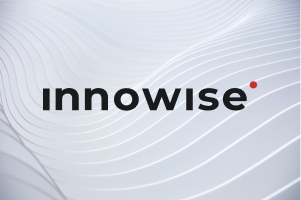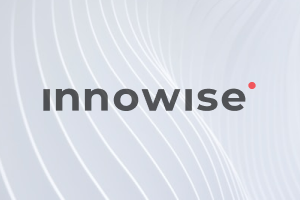Votre message a été envoyé.
Nous traiterons votre demande et vous contacterons dès que possible.
Le formulaire a été soumis avec succès.
Vous trouverez de plus amples informations dans votre boîte aux lettres.

Sélection de la langue


En 2025, l'augmentation du personnel informatique est la norme dans le secteur de la technologie, et ce pour une bonne raison. Statista rapporte que les recruteurs n'arrivent souvent pas à trouver des développeurs qualifiésLes entreprises de services informatiques ont du mal à faire correspondre les candidats aux exigences du poste, et elles doivent le faire dans des délais très courts. L'augmentation du personnel informatique peut résoudre tous ces problèmes presque immédiatement, et c'est la raison pour laquelle les analystes s'attendent à ce que l'augmentation du personnel informatique se fasse dans les meilleurs délais. 13,7% croissance annuelle du marché de la dotation en personnel informatique d'ici 2033.
Dans cet article, je détaillerai les avantages de l'augmentation du personnel informatique, les cas où ce modèle est efficace et ceux où il ne l'est pas, afin de vous aider à prendre la meilleure décision pour votre entreprise.
L'augmentation du personnel informatique consiste à élargir votre équipe d'ingénieurs avec des développeurs externes qui travaillent dans votre environnement, suivent votre processus et livrent du code en même temps que votre personnel. Si vous avez ouvert cette page, il y a de fortes chances que vous ayez déjà une idée de ce qu'est le renforcement de l'équipe informatique. Mais je veux que nous soyons sur la même longueur d'onde avant d'entrer dans les détails.
D'après mon expérience, les entreprises se tournent généralement vers le renforcement des effectifs parce qu'en plus d'être pratique, il permet de résoudre des problèmes commerciaux urgents. Par exemple, lorsque vous ne pouvez pas embaucher assez rapidement ou que vous avez besoin de compétences rares, les principaux avantages des services de renforcement du personnel informatique deviennent évidents. Consultez la liste des avantages découlant de dizaines de projets réussis de Innowise.
Avec l'augmentation, vous ne passez pas des mois à éplucher des CV, à organiser des entretiens, à évaluer les compétences techniques et à négocier des contrats. Vous obtenez des ingénieurs qui peuvent commencer à travailler en quelques jours et vous apporter des résultats en quelques semaines. Un exemple pratique : les experts techniques de Innowise rejoignent les projets en 3 à 5 jours en moyenne. Comparez cela aux recrutements internes qui prennent généralement de 4 à 6 semaines.
Les projets technologiques sont parfois imprévisibles et vous ne disposez pas toujours de l'expertise nécessaire en interne. Surtout lorsqu'il s'agit de plateformes de niche ou de technologies émergentes. En revanche, les sociétés de renforcement du personnel Nearshore ont accès à un vivier de talents mondial et peuvent vous envoyer des spécialistes possédant des compétences techniques rares. Si vous travaillez avec Innowise, vous aurez toujours à portée de main une expertise informatique variée : de AI à SAP en passant par l'informatique en nuage et Python.
L'embauche à temps plein implique des salaires, des avantages sociaux, des locaux et un engagement à long terme. Lorsque vous renforcez l'équipe, vous ne payez que les heures consacrées au travail effectif, ni plus ni moins. C'est là que les avantages en termes de coûts de l'augmentation du personnel informatique commencent à se faire sentir : vous limitez les budgets tout en continuant à faire avancer les choses.
Avec l'augmentation, le travail se fait dans vos dépôts, dans le cadre de votre SDLC, avec vos portes de révision et vos processus. Vous fixez les priorités et les normes ; les ingénieurs externalisés se branchent et les suivent à la lettre. Contrairement à l'externalisation d'un projet complet, vous gérez directement l'équipe et savez exactement ce qui se passe, et vous pouvez repérer ce qui bloque la livraison.
Vous avez besoin de trois seniors pendant un mois et d'un autre après ? Vous pouvez augmenter la taille de l'équipe lorsque les délais s'allongent et la réduire lorsque la pression diminue. Cela vous permet d'adapter la capacité à la charge de travail, d'éviter les salaires inutiles et de respecter les délais accélérés des projets. L'un des nos clients a justement embauché un ingénieur Flutter pour renforcer son équipe de développement de l'application d'abonnement à la salle de sport. Et, une fois la saison chargée terminée, ils se sont séparés - aussi facilement que cela.
Si un ingénieur clé quitte l'entreprise en cours de route ou si un manque de compétences inattendu apparaît, vous pouvez faire appel aux ingénieurs du fournisseur qui sont prêts à combler les lacunes rapidement. De plus, étant donné que vous travaillez déjà avec des ingénieurs externes, ils peuvent faciliter l'intégration de nouveaux ingénieurs. Il est très probable que vous n'obtiendrez pas ce niveau de continuité et d'atténuation des risques d'une autre manière, sans manquer les délais.
Non seulement vous trouvez des candidats plus rapidement, mais vous n'avez pas non plus à vous occuper de la paperasserie liée à l'embauche en interne. L'augmentation des effectifs supprime la nécessité de gérer les contrats de travail, la paie, l'intégration des employés et l'évaluation des performances. Votre équipe RH peut se concentrer sur les rôles stratégiques à long terme, et l'équipe de livraison obtient des contributeurs plus rapidement.
Lorsque de nouvelles personnes intègrent votre équipe, même pour une courte période, elles apportent inévitablement de nouvelles idées et de nouvelles perspectives sur ce que vous avez déjà. En collaborant avec l'équipe de développement interne, ils échangent des idées, partagent leurs connaissances et discutent de nouveaux outils ou de meilleures pratiques. En fin de compte, votre personnel interne devient plus fort en travaillant avec des personnes ayant des connaissances techniques variées.
Ce modèle ne convient pas à tous les scénarios. Le renforcement des effectifs présente des avantages et des inconvénients réels, et mon travail consiste à les exposer afin que vous puissiez décider de ce qui vous convient le mieux.

| Augmentation du personnel | Services gérés | Équipe dédiée | Externalisation de projets | |
| Propriété | Vous êtes responsable de la feuille de route, des dépôts et des priorités ; les ingénieurs externes suivent votre processus. | Le fournisseur est propriétaire des résultats dans un domaine défini (par exemple, le suivi, l'assistance). | Partagé : vous fixez les priorités, le fournisseur s'occupe du personnel et de la gestion quotidienne. | Le vendeur est responsable de la livraison, de l'étendue des travaux à la production finale. |
| Vitesse | Le plus rapide : les ingénieurs agréés peuvent s'inscrire en quelques jours. | Modéré : l'intégration dépend de la configuration et de l'intégration des services. | Modéré : la mise en place prend des semaines pour aligner la gestion et le flux de livraison. | Le plus lent : nécessite un cadrage détaillé, des contrats et un coup d'envoi. |
| Prévisibilité des coûts | Variable, paiement au fur et à mesure ; utilise généralement le modèle T&M. | Frais mensuels ou annuels fixes ; prévisibles mais moins flexibles. | Taux mensuel par équipe ; prévisible si le champ d'application est stable. | Si prix fixe : prévisible, mais le champ d'application est rigide. Si T&M : flexible mais moins prévisible. |
| Risque | Faible risque de livraison si le projet est bien géré en interne. | Le fournisseur est responsable des accords de niveau de service (SLA) et du temps de fonctionnement ; votre risque est le verrouillage du fournisseur. | Vous risquez d'être confronté à une dérive de la portée de la livraison. | Le fournisseur assume le risque de livraison, mais vous risquez un désalignement si le champ d'application évolue. |
| Meilleur pour | Équipes dotées de chefs de projet ou de techniciens compétents qui ont besoin d'une capacité supplémentaire rapidement. | Fonctions continues et répétitives, assistance 24/7 et couverture mondiale. | Les constructions de produits à long terme pour lesquelles vous souhaitez disposer d'une équipe stable et semi-autonome. | Des projets clairs, à portée fixe, pour lesquels vous préférez externaliser les résultats. |
Lorsque vous avez décidé que l'augmentation du personnel est la bonne solution, la question suivante est de savoir quel type de personnel conviendra le mieux à votre entreprise.
Même si vous êtes convaincu par le modèle, la véritable différence réside dans le choix de votre partenaire. Tous les fournisseurs ne sont pas en mesure de répondre à vos attentes. Pour éviter les remords de l'acheteur, je suggère d'utiliser une simple liste de critères permettant de définir des partenaires fiables.
Je vais être honnête : le fait d'être le directeur technique ne signifie pas que j'accorde un passe-droit à Innowise. Je soumets ma propre équipe aux mêmes normes que celles que j'exigerais de n'importe quel fournisseur : rapidité, fiabilité, profondeur technique et transparence. C'est pourquoi je peux affirmer que nos services de renforcement du personnel informatique résistent à un examen minutieux. Permettez-moi donc de vous expliquer pourquoi travailler avec Innowise pourrait être la bonne solution pour vous.
Oui, surtout lorsque vous avez besoin de compétences rapidement et que vous n'envisagez pas de les conserver à long terme. Fondamentalement, cela signifie une meilleure allocation des ressources, moins de frais de recrutement et de rétention. Les tâches sont couvertes et l'équipe interne se concentre davantage, car elle n'a pas à éteindre des incendies en permanence.
Les ingénieurs augmentés peuvent rejoindre le projet dans les 3 à 5 jours et commencer à fournir des résultats dès les premières semaines. Parce qu'ils suivent votre chaîne d'outils et vos processus (par exemple, les méthodologies Agile), l'intégration est courte.
Si vous souhaitez une prestation axée sur les résultats, avec une partie responsable de l'ensemble du projet, les modèles gérés ou externalisés sont préférables. Le renforcement du personnel fonctionne mieux lorsque vous avez besoin d'un plus grand nombre de personnes pour suivre vos instructions.
Chez Innowise, nous nous alignons sur les normes GDPR et HIPAA lorsque cela est nécessaire, nous menons des projets dans le cadre de pratiques SDLC sécurisées, nous appliquons le contrôle d'accès et nous suivons les normes ISO 27001 et SOC 2.
Dmitry dirige la stratégie technologique derrière les solutions personnalisées qui fonctionnent réellement pour les clients - aujourd'hui et au fur et à mesure de leur croissance. Il fait le lien entre la vision d'ensemble et l'exécution pratique, s'assurant que chaque construction est intelligente, évolutive et alignée sur l'entreprise.












Votre message a été envoyé.
Nous traiterons votre demande et vous contacterons dès que possible.

En vous inscrivant, vous acceptez notre Politique de confidentialitéy compris l'utilisation de cookies et le transfert de vos informations personnelles.